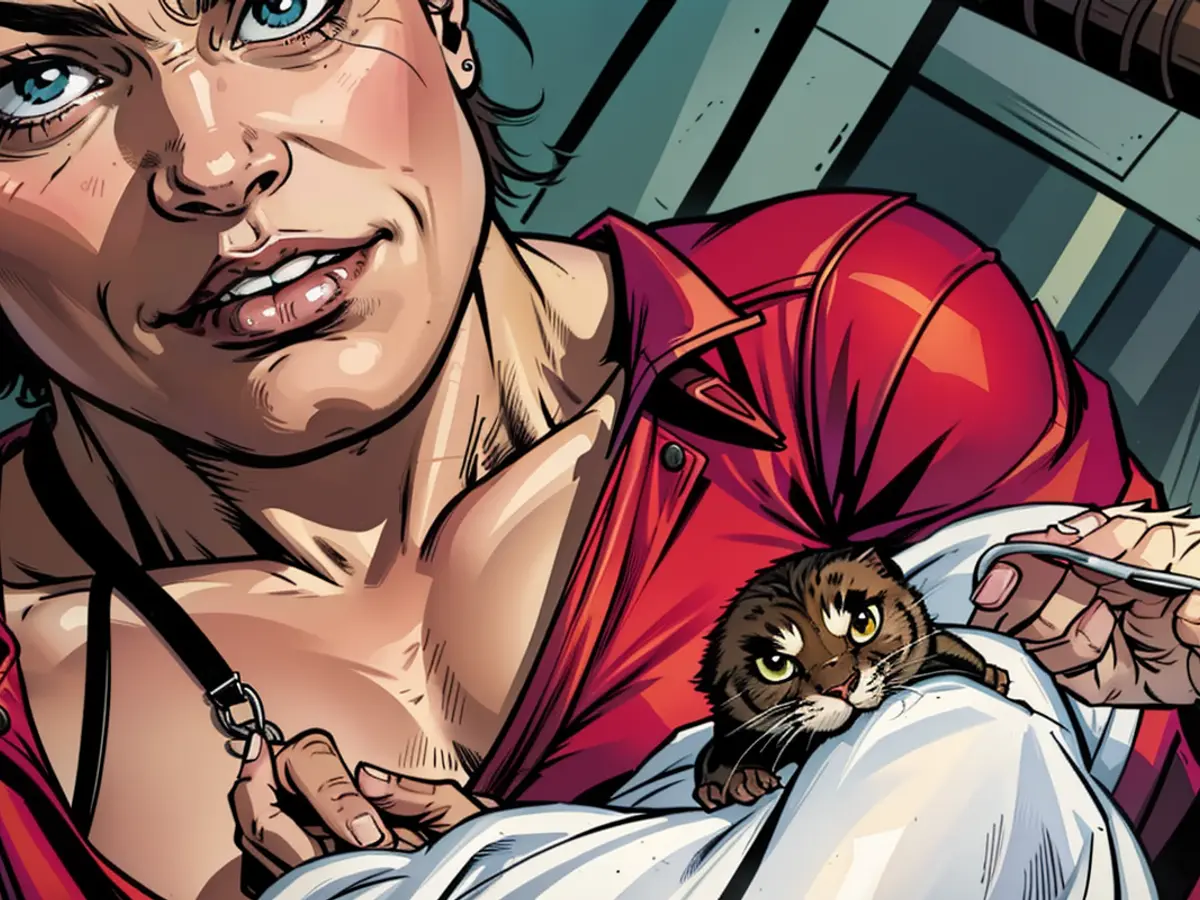- Der Fledermauspfleger interessiert sich für die Entwicklung von Elmhorn - "interessante Kreaturen"
In ein paar Tagen wird Ines Kock, eine 51-jährige Dame aus Pinneberg, alleine mit ihrem Bartagamen, Burny, in ihrer Dachgeschosswohnung leben. Momentan teilen sie das Schlafzimmer mit drei Fledermäusen. Seit einem Jahrzehnt hilft Kock sowohl kleinen als auch großen Fledermäusen in Not. In ihrem schwach beleuchteten Schlafzimmer pflegt sie sie, füttert sie, gibt ihnen Wasser und überwacht ihren Fortschritt. "Sobald sie ihr ursprüngliches Gewicht wiedererlangt haben und effektiv fliegen können, lassen wir sie zurück in die Wildnis frei", erklärte die mitfühlende ältere Krankenschwester. Sie rettete auch Burny aus schlechten Lebensbedingungen.
Im Moment leben zwei Zwergfledermäuse in einem mannshohen, weißen Moskitonetzgehege, während eine Großer Hufeisennase in einem Terrarium untergebracht ist. Diese Tiere kamen von der nahen Wildtierstation in Klein Offenseth-Sparrieshoop. Hauptsächlich wurden die Fledermäuse von besorgten Individuen übergeben.
Viele dieser fliegenden Kreaturen sind verletzt, während andere unterernährt oder dehydriert sind. "Wenn es heiß ist, brauchen sie nur etwas Wasser, und sie fliegen nachts davon", weiß Kock. Aber wie erkennt man, ob eine Fledermaus Hilfe benötigt? "Einfach: Wenn man eine Fledermaus tagsüber hängen oder ruhen sieht, benötigt sie in der Regel Hilfe", erklärte Kock. Fledermäuse können bis zu 20 Jahre leben.
In den Frühjahrs- und Herbstmonaten widmet sie ihre Zeit der Pflege von bis zu 20 Fledermäusen in ihrem Wohnsitz. In dicht besiedelten Monaten gibt sie etwa 250 bis 300 Euro im Monat aus -mostly for food. The bats consume mealworms, crickets, and if they're extremely weak, a combination of mealworms and cat milk. "It adds up." She hopes for financial support in the form of in-kind and monetary donations. She also shares her experiences on the TikTok social media platform.
For biologist and bat expert Florian Gloza-Rausch, this assistance for the animals is a delicate balance. "Nursing individual bats may not have much scientific significance in terms of population ecology. However, bat conservation also relies on public relations." And for that, this involvement by animal lovers is beneficial. Yet, it's essential that animal affection doesn't go too far. If blood transfusions and lengthy transportation distances become involved, proportionality is lost.
Kock agrees and ensures that the bats discovered in the area are housed with her as naturally as possible. "These are classic wild animals and they should stay that way. I have minimal human interaction with them."
Northern Germany, including the federal states of Mecklenburg-Vorpommern, Brandenburg, Lower Saxony, Bremen, Hamburg, and Schleswig-Holstein, is an essential and valuable bat habitat, said Gloza-Rausch, who is also the board member of the Federal Association of Bat Research and the German Bat Wardens. "Due to the natural landscape features of Northern Germany, such as its extensive lake landscapes, important river systems, heaths, moors, beech and oak forests, and the increasing proportion of ecologically managed agricultural areas, bat species such as the greater horseshoe bat, evening bat, lesser evening bat, pond bat, water bat, serotine bat, ruffled bat, and pipistrelle bat thrive here."
In the Kalkberg Cave in Bad Segeberg, for instance, around 30,000 to 35,000 bats have been wintering there for years, according to Stefan Lüders, the bat specialist of the Nature Conservation Union NABU Schleswig-Holstein. Six to seven earwig-like bat species constitute the majority of the population in this wintering site - one of the largest in Europe. In Schleswig-Holstein, there are 15 of the 23 bat species known in Germany. Across Europe, there are 30 species, according to NABU.
However, excessive light, construction, and wind turbines pose challenges to these small mammals. Regardless, there are positive developments in the population of some bat species, said Gloza-Rausch further. "For example, the populations of pipistrelle and common pipistrelle bats are relatively stable at a high level. Species like the greater horseshoe bat, which in the past suffered severe population declines due to the use of toxic wood preservatives, are recovering well."
The two pipistrelle bats in Kock's mosquito net are now ready to be released back into the wild. The common pipistrelle bat is expected to follow in one to two weeks. "For this, I drive with my daughter near old farms and tall trees. I carefully pick them up with my hands. They sniff briefly and then they're gone."
The European Union provides funding for various wildlife conservation projects, which could potentially support organizations like Ines Kock's in their efforts to care for injured bats. Ines Kock often collaborates with local wildlife stations, including the one in Klein Offenseth-Sparrieshoop, which are part of the European Union's efforts to preserve biodiversity.








